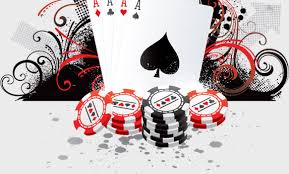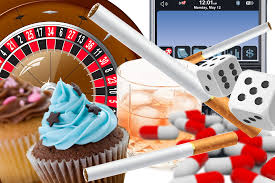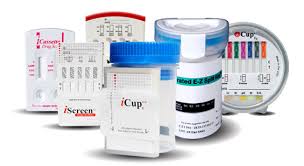Rehab Articles

There have been a few suspected cases of Krokodil use in Canada, but is this trend becoming a big problem? Krokodil is a cheap heroin substitute that was created in Russia, and this drug of abuse combines codeine with toxic substances like gasoline, paint thinner, and others. The result is injected into the body, and it can have devastating effects. The drug is named because it can turn the skin scaly, and cause deep abscesses and chronic infections that become severe. Even though users in Russia know the dangers of this drug they continue to use it. Krokodil use can cause gangrene, amputation, and even death in many cases. But is Krokodil use in Canada on the rise? There have been a few cases where Krokodil use in Canada has been suspected but so far there is no concrete evidence that this drug has made it’s way to the country.
Many reports of suspected Krokodil use in Canada have been made because of ulcers, and sometimes medical professionals have found patients with deep sores and infections that are not what is expected with typical heroin users who inject the drug. Canadian authorities have worked with the DEA in the USA in order to determine whether Krokodil use in Canada is becoming a problem. So far there have been no definitive lab results or other proof that this drug has traveled to the north, and no samples of Krokodil have been found with drug seizures. That does not mean that there is not any Krokodil use in Canada, only that this can not be confirmed so far.
Rehab Articles

Signs of compulsive gambling indicate that the individual has a serious problem, and detecting these signs can be crucial to getting the person gambling the help that they need. Usually there are four big phases to a gambling addiction, and each person may spend a different time in each phase or even skip a phase at times. The first phase is winning, and the individual may win frequently or win big, and this just reinforces the views of the gambler. Sometimes compulsive gambling does not include a big win phases and the individual skips directly to phase two. The next phase is losing, and it is followed by desperation and then hopelessness. Once the final stage of compulsive gambling is reached the individual may consider suicide or other unacceptable options, and help is essential.
Signs of compulsive gambling that friends and family should look for include:
-
A constant need for money, financial difficulties, and frequent problems paying monthly bills and expenses.
-
Gambling becomes a constant preoccupation, and the individual will do almost anything to get a chance to gamble one more time.
-
A considerable time is spent on gambling activities or in casinos.
-
The gambler tries to cut back or stop and they experience incredible difficulty in doing this.
-
Gambling losses affect the daily life and household for the entire family.
-
The individual will lie about why money is needed, or steal from friends and loved ones in order to get money to gamble with.
-
The individual continuously believes that they are just one gamble away from a big win which will solve everything.
Rehab Articles

Addictive behavior is displayed by many people, and it is important to understand what this behavior is and why it occurs. Individuals who are addicted to any substance or activity will exhibit addictive behavior and this is an indication that treatment for substance abuse or addiction is needed. This type of behavior is very compulsive and it is caused when the substance abuse or compulsions cause the individual to lose control of their daily life and responsibilities. The negative consequences of the substance abuse or addiction are not enough to cause the individual to stop, even when they see their life falling apart and their relationships suffering from irreparable damage. Often individuals with addictive behavior tend to suffer from low self esteem, and some have a mental disorder that also needs to be addressed and treated.
If you or someone you care about displays any signs of addictive behavior then an intervention may be necessary in order to get the help that is badly needed. If left untreated then addictive behavior can start a downward spiral that is highly destructive. The specific cause of the addictive behavior needs to be identified before it can be addressed during treatment, and a dual diagnosis may be given if there is more than one issue requiring treatment. This may be the case for anyone who has substance abuse and mental disorder problems, or those who have an alcohol addiction and a gambling compulsion. The treatment provided must be closely matched to the reason for the addictive behavior or else the best possible results may not be achieved.
Rehab Articles

Are stimulant drugs being prescribed too frequently? This is a question that some medical professionals are starting to ask, and the evidence may show that the answer is yes. It is common today for children and teens to be prescribed stimulant medications in order to help them do better in school, concentrate better and focus more, and control their behavior. Some are claiming that these prescription medications are being over prescribed though, and that these drugs are being used in order to control kids and allow larger class sizes with less teacher attention and intervention. While it is true that some kids may require these medications in order to function properly there have been cases where the medications have been prescribed when other treatments including individual and group therapy may have been just as effective.
If you or your child has been prescribed stimulant drugs there are some things that need to be considered. Are these prescription medications the only treatment option that will work or are there other methods of treatment that may carry fewer risks? Therapy and counseling may offer great results but these treatments usually take some time to start showing results, and sometimes people want a quick fix without having to work on their progress. There are situations where stimulant drugs are needed but the use of these prescription medications should be weighed carefully against any risks that are involved. Stimulant drugs have a high potential for abuse and addiction, and for anyone who already has a higher than typical risk for these factors the use of stimulants should only be done after all other treatment methods have failed.
Rehab Articles

Heroin abuse is a growing problem in the USA and many other parts of the world, but until now testing for heroin with conclusive results has not been easy because this opiate comes from the opium poppy plant. This plant is also where poppy seeds come from, and if you eat poppy seeds then traditional drug testing for heroin abuse could cause a false positive for heroin. A new drug test has been developed that can distinguish between these two factors, making it easier for parents, courts, and employers to identify heroin abuse without concerns about false positive results. Researchers hope that the latest test can finally eliminate the poppy seed defense for heroin addicts. Recent research featured in the journal Drug Testing and Analysis shows great promise at eliminating the false results that poppy seed consumption can give.
The authors of the research study wanted to identify a substance that can be found in street heroin but that is not present in poppy seeds or even prescription opiates, and this substance was a unique metabolite that has been designated as ATM4G. If this metabolite is present in high amounts in the urine of the individual then this means heroin abuse has occurred. The research is still in the early stages but many believe this shows great promise for the drug testing industry. According to Dr Andrew Kicman ‘This research report addresses a longstanding analytical problem in forensic toxicology and workplace drug testing, by identifying a urinary marker that differentiates street heroin users from those whom have ingested morphine present in poppy seeds.” It may be some time before this type of testing is widespread though.



